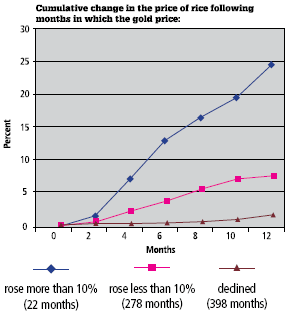
From the Middle Ages onwards, the fear of deficient harvests in England and France immediately produced pamphlets attacking hoarders and speculators for driving up prices.
In consequence, the statute books were stuffed with laws prohibiting many of the activities that would normally accompany the free trade in grain.
The arguments against government interference and for freedom in the grain trade were laid out in a comprehensive way by Condorcet (1743-1794) and Turgot (1727-1781) in France and Adam Smith (1723-1790) in England.
The serious student should consult Condorcet’s Reflexions sur le commerce des bles (1776), Turgot’s Lettres sur le commerce des grains, published posthumously in 1788, and Smith’s The Wealth of Nations (1776).
For example, Smith discussed at length both speculation over time (buying low now in hope of selling high in the future) and arbitraging over space (buying low at one location in hope of selling for more than the purchase price plus transport costs at another location).
The first activity was known as forestalling and the latter engrossing. For Smith, forestalling and engrossing were a “most important operation of commerce”.
And as he concluded: “The popular fear of engrossing and forestalling may be compared to the popular terrors and suspicions of witchcraft. The unfortunate wretches accused of this latter crime were not more innocent of the misfortune imputed to them, than those who have been accused of the former.”
Invisible hand
Smith’s prescription (as well as condorcet’s and turgot’s) was that governments should heed the maxim of laissezfaire. The idea of Smith’s invisible hand was clear: “It is the interest of the people that their daily, weekly, and monthly consumption should be proportioned as exactly as possible to the supply of the season. The interest of the inland corn dealers is the same. By supplying them as nearly as he can judge, in this proportion, he is likely to sell all his corn for the highest price, and with the greatest profit; and his knowledge of the state of the crop, and of his daily, weekly, and monthly sales, enable him to judge, with more or less accuracy, how far they really are supplied in this manner. Without intending the interest of the people, he is necessarily led, by a regard to his own interest, to treat them, even in years of scarcity, pretty much in the same manner as the prudent master of a vessel is sometimes obliged to treat his crew.”
As I pointed out in my May column “On Rice and Corn Laws”, public opinion was eventually turned around and the Corn Laws were repealed.
What’s behind the high prices
With rice prices soaring, the public’s ire about speculators has risen – just as it did in the days of old.
No current-day politicians have matched Vladimir Ilyich Lenin, who told the Petrograd Soviet that “until we apply terror to speculators – shooting on the spot – we won’t get anywhere.”
That said, India’s government has taken to shuttering commodity futures exchanges to protect the public from the sky-high prices caused by speculators. Interestingly, many commodities whose prices have surged such as tungsten and cobalt are closely held and don’t trade on futures exchanges. Never mind. As Condorcet, Turgot and Smith might have said, what nonsense.
If it’s not the speculators, then what is causing rice prices to surge? The rice price problem (and that of other commodities) is largely a dollar problem.

The fall in the dollar relative to gold has forced a massive increase in the world price of rice and other commodities.
David Ranson and I have constructed the accompanying chart that illustrates the way that the price of rice responds to changes in the price of gold.
The monthly history of the gold price for the past six decades is divided into three categories, according to the degree of the gold price change in the initial month. The evolution of the price of rice over the following year is then plotted.
It’s clear that changes in the dollar’s price have accounted for the lion’s share of the changes in rice prices historically. Today is no different. It’s time to stop blaming the speculators and start pointing a finger at the weak dollar.
Author Steve H. Hanke

0 responses on "The Price of Rice"